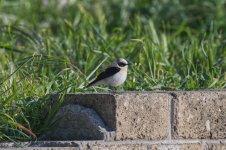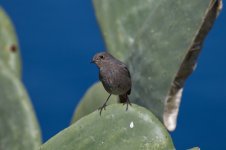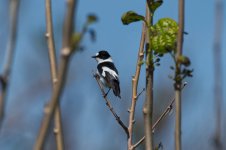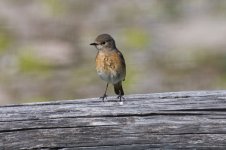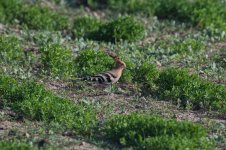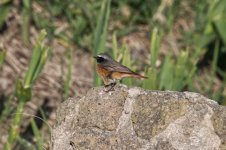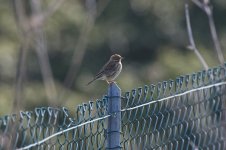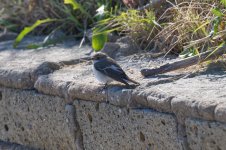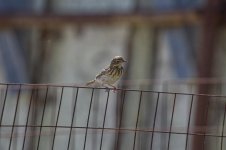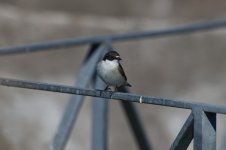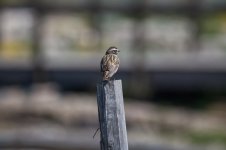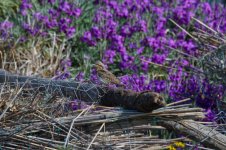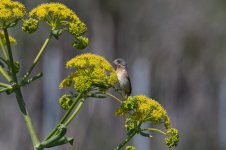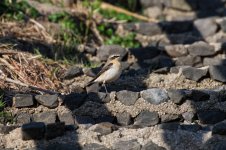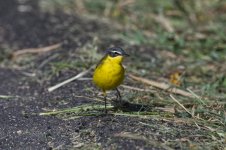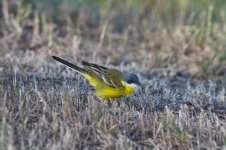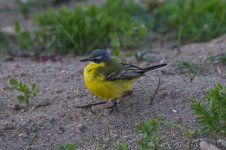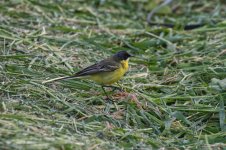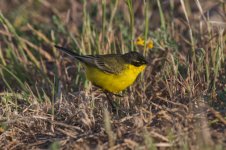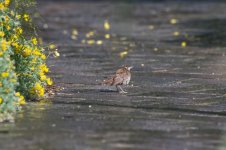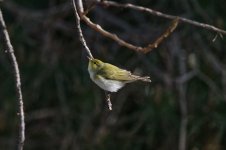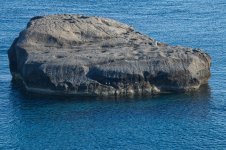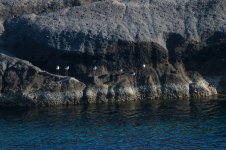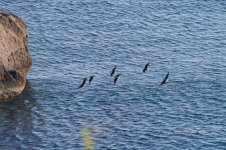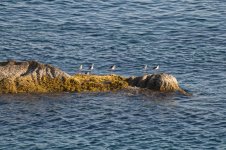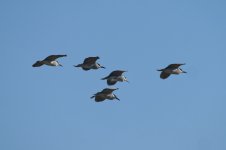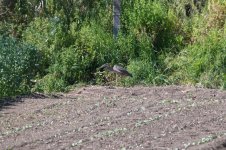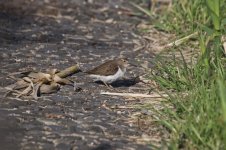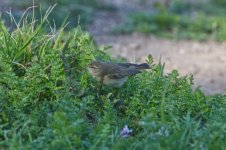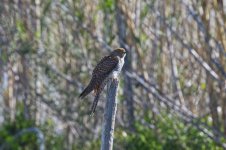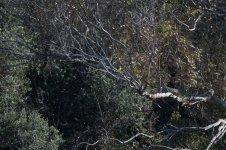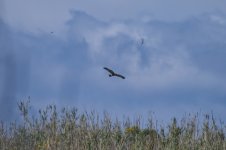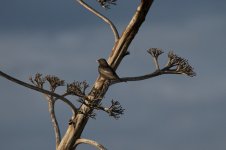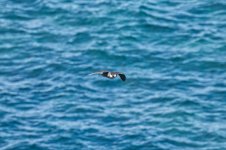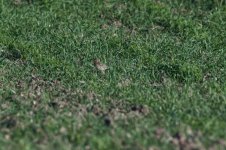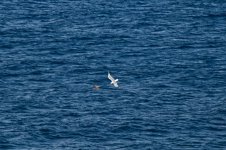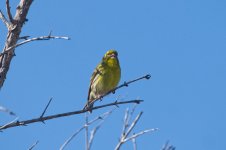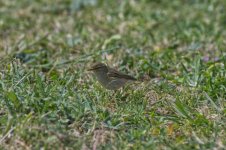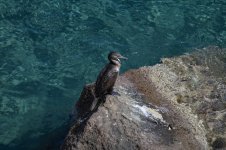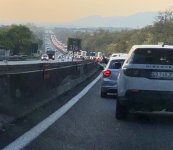
We spent the Easter break on the island of Ventotene, off the coast between Rome and Naples, a famous migration hotspot as are most of the other small islands along the western coast of Italy, in the Thyrrenian sea, all belonging to a monitoring and ringing project. Somehow we had never managed to go, but this year Easter came at a convenient time and also some birder friends were going, too, so we decided to tag along.
We weren’t expecting miracles as the first decade of April wouldn’t be peak migration, but we were happy to settle for good numbers and species we wouldn’t normally see here. Despite the unseasonably cold weather (we had dinner in our coats every night at the agriturismo where we were staying and when we went out for a pizza with our friends we had our wooly hats on too!) we had lots of fun, especially the first three days were really good, as the birds were coming in in droves.
For anyone wanting to go some practical info: the island is tiny, roughly 3 km by one, so unless you book an hotel with a shuttle service, it’s walking all the way, on concrete, so bring sturdy boots. There are lots of holiday lets, a few hotels and B&Bs and some have packages for birders. One supermarket, a cafe and a bakery are open year-round so self-catering isn’t a problem. Ferries and hydrofoils leave from Formia and take respectively 2 and 1 hour to get there. There are car parks in Formia which charge about 8-12€ a day to keep your car safe, some have shuttles for the port, others will meet you at the ferry, take your car and then bring it back when you return (it was a bit of a leap of faith, but it had been recommended by our host). Or take a train to Formia (on the main Rome-Naples line).
Some touristy landscape pics:
We weren’t expecting miracles as the first decade of April wouldn’t be peak migration, but we were happy to settle for good numbers and species we wouldn’t normally see here. Despite the unseasonably cold weather (we had dinner in our coats every night at the agriturismo where we were staying and when we went out for a pizza with our friends we had our wooly hats on too!) we had lots of fun, especially the first three days were really good, as the birds were coming in in droves.
For anyone wanting to go some practical info: the island is tiny, roughly 3 km by one, so unless you book an hotel with a shuttle service, it’s walking all the way, on concrete, so bring sturdy boots. There are lots of holiday lets, a few hotels and B&Bs and some have packages for birders. One supermarket, a cafe and a bakery are open year-round so self-catering isn’t a problem. Ferries and hydrofoils leave from Formia and take respectively 2 and 1 hour to get there. There are car parks in Formia which charge about 8-12€ a day to keep your car safe, some have shuttles for the port, others will meet you at the ferry, take your car and then bring it back when you return (it was a bit of a leap of faith, but it had been recommended by our host). Or take a train to Formia (on the main Rome-Naples line).
Some touristy landscape pics:
Attachments
-
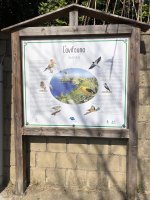 birdlife.jpg534.9 KB · Views: 18
birdlife.jpg534.9 KB · Views: 18 -
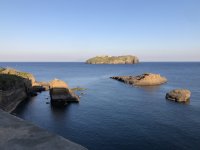 view5.jpg635.3 KB · Views: 17
view5.jpg635.3 KB · Views: 17 -
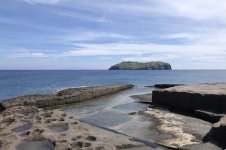 view3.jpg676.7 KB · Views: 16
view3.jpg676.7 KB · Views: 16 -
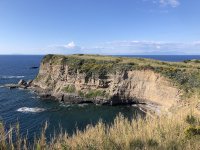 view2.jpg587.1 KB · Views: 15
view2.jpg587.1 KB · Views: 15 -
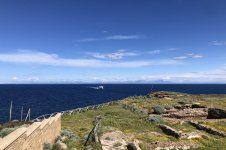 view1.jpg818.9 KB · Views: 16
view1.jpg818.9 KB · Views: 16 -
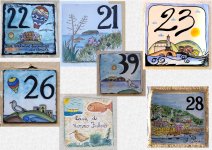 tiles.jpg2.5 MB · Views: 13
tiles.jpg2.5 MB · Views: 13 -
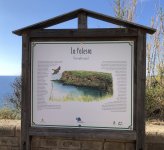 IMG_7122.jpg547.1 KB · Views: 14
IMG_7122.jpg547.1 KB · Views: 14 -
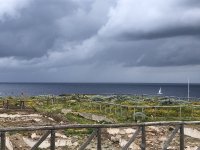 IMG_6725.jpg431.3 KB · Views: 14
IMG_6725.jpg431.3 KB · Views: 14 -
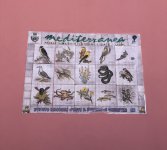 IMG_6678.jpg418.8 KB · Views: 18
IMG_6678.jpg418.8 KB · Views: 18 -
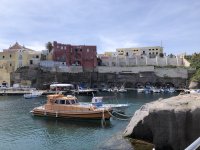 harbour.jpg418.1 KB · Views: 18
harbour.jpg418.1 KB · Views: 18




